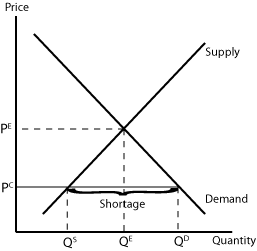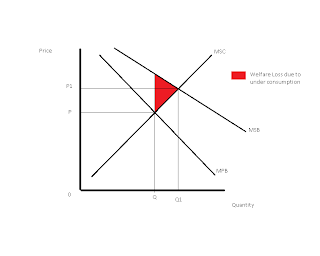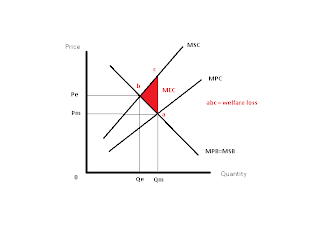Econ 1 is 75 marks in 75 minutes time is tight
the MCQ 25 marks - do it first it gets the brain thinking in economic terms and also may throw up some definitions or diagrams which may be useful on the Data Response. Thus I would recommend spending a couple of minutes glancing at the Data Response to make a mental note of the general themes eg negative externalities to see if a diagram comes up on the MCQ you can cross reference with.
- Spend no more than 1 minute per question - a stopwatch on the time is useful.
- Read the stem carefully - some a long which is a distractor in itself.
- Underline key words or phrase draw a diagram on the paper if appropriate.
- Check responses - eliminate obvious wrong answers - choose best option - ie the one that relate most strongly to the question stem
- If unsure still make a stab at it and note the question number on a spare piece of paper. This will give you a list of questions to check if you have time at the end.
The MCQ should take around 20 minutes if you stick to this approach. Take the 3-5 minutes you have created to read over the Data Response options.
DR 50 marks
In most exam sessions there is one straight forward question and one obscure one - choose the easy option?!
Definition 5 marks - clear concise not more than one or two sentences plus eg if appropriate. Elasticity formula is enough for full marks.
Data 8 marks - simple and significant two points - high low = range / start finish. Just give observation + data plus units. Separate your two observations clearly eg "Firstly" Secondly". On graphs and charts use a ruler to read accurate data.
Diagram 12 marks - remember two types:
- orthodox - define demand supply market (2) identify factor from extract say which curve it affects and in which direction, suggest what happens to price and output (4) draw diagram labelling all curves and axis - include the idea of excess demand or supply at original price (4). Underneath explain how identified excess demand or supply forces price to a new equilibrium, mention elasticity issues which mean price or quantity reacts the most (4). Final paragraph adds some observation about short run vs long run changes or impacts on related markets (4) = 18 marks to max 12
- alternative - define concept eg externality or price floor (2). Explain the nature of the concept and how it relates to demand or supply (4). Refer to the extract to contextualise the concept (4). Draw diagram fully labelled (4). Explain diagram with extra detail such a welfare impacts (4) = 18 max 12
If you do the first 3 parts of the data response quickly, accurately and concisely you can complete them in 15 minutes - use the First 5 minutes to read the 25 mark question and extracts carefully and sketch a plan using prompts from the extracts to guide you to key issues and logical order - remember think "what is my argument?"
Orthodox Essay 25 marks
Intro;
define key terms in question use data from chart/table (12 mark question) to bring discussion into context eg what has happened to wheat prices
- I1 identify problem eg price volatility explain why this happens - with diagram? and why it is a problem - this is basically a discussion of how the market works
- I2 Suggestion one policy option to deal with situation eg price ceiling explain how it works and positive and negatives. Also what its outcome depends on
- I3 Suggest alternative policy option eg buffer stock do the same as with I1
- Conclude by bringing both policies together - think cost benefit and combining policies to see if they are mutually reinforcing (complementary) or contradictory.
- Discuss the idea of Government Failure and other complexities
there are variations where you are asked to discuss a specific policy or, compare market outcomes with intervention but there will basically fall into a similar structure
Keep you discussion in
context. To help you refer to the extract explicitly in each section of the essay
Draw diagrams to support each issue , give them space and a full title, label them fully and integrate them into the discussion
Refer back to the question at the start of the conclusion to make sure you are answering the question set
If you have 5 minutes at the end go back to the MCQ questions you were unsure about to check them
































